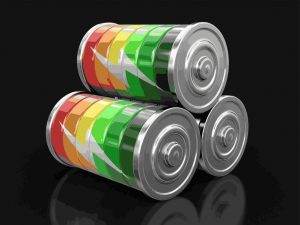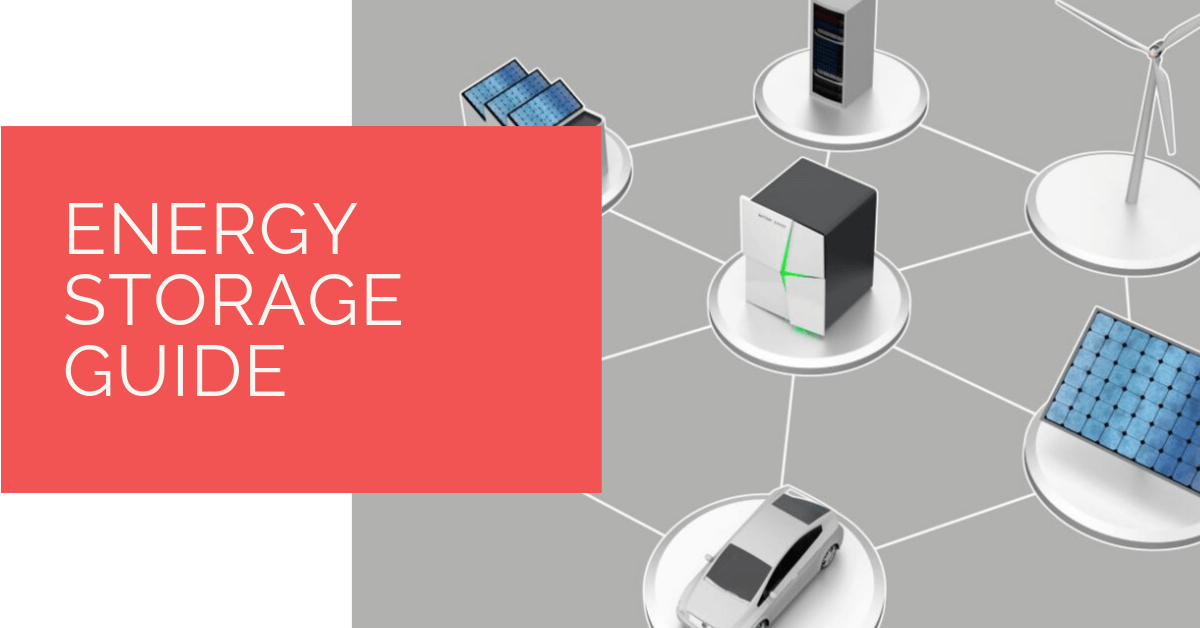Energy storage is the process of capturing energy after its production and keeping for later use. Depending on the method and technology, the storage process might involve converting the energy from one particular form that is difficult and or uneconomical to store to another much easier form that is cheaper to store. Additionally, some methods are better suited for bulk energy storage for longer periods. Other methods and technologies have limited capacity in terms of how much energy and for how long they can store the energy. There are various energy storage types, including:
- Thermal
- Mechanical
- Fossil fuels
- Chemical
- Electromagnetic/Electrical
- Biological
- Electrochemical methods and technologies
Every energy storage technology and method falls in one of the above categories. Additionally, all energy storage methods and techniques have one thing in common; they are beneficial to energy consumers.
Contents
- 1 Key Takeaways
- 2 What Are The Benefits Of Energy Storage?
- 3 Heat Storage
- 4 Heat Batteries
- 5 Electricity Storage
- 6 Heat Pump Source: Reliable Heating and Cooling Solutions
- 7 Conclusion
Key Takeaways
- Energy storage is crucial for several reasons, including environmental benefits by integrating clean energy, increasing grid reliability and resiliency, and making the production and supply of energy cheaper.
- Thermal storage systems, like thermal stores, are effective for storing excess energy from renewables, increasing energy efficiency, and accommodating various fuel sources.
- Ice thermal storage is a cost-effective way to reduce energy consumption, environmental footprint, and cooling costs, especially by shifting energy consumption to non-peak hours.
- Heat batteries, including phase change thermal batteries, offer the advantage of long-term use, cost-effectiveness, and compactness, helping store and release heat efficiently.
- Electricity batteries, such as those used with renewable sources like solar panels, enable homeowners to rely more on green energy, reduce energy costs, and lower greenhouse gas emissions.
What Are The Benefits Of Energy Storage?
1. Environmental Benefits
Energy storage facilitates clean energy integration into our energy supply mix that is the most exciting for scientist, energy providers, and nation around the globe. With the increased awareness of global warming and increased appreciation for clean green energy in curbing and ultimately reversing global warming, the need, and demand for efficient and effective energy storage methods, systems, and technologies are on the rise.
Keep in mind energy storage allows energy producers to store any excess energy produced by green energy sources such as wind and solar for use when the energy supply subsides. Through energy storage, we deal with the variable nature of green energy supply, increasing the speed of integration of green energy utility.

2. Energy Storage Increase Grid Reliability And Resiliency
Energy storage protects power grids and improves the stability of the grid infrastructure. Energy storage, for instance, enhances the efficiency of power transmission for people who are further from the source of energy. Moreover, energy storage allows power producers to meet power demands during peak consumption periods, where power consumption outstrips power production. In the same light, energy storage reduces the strain placed on the power grid during times of emergencies that results in a sudden spike in power demand.
3. Energy Storage Makes The Production And Supply Of Energy Cheaper
By improving the grid efficiencies and reducing the strain placed on the grid. Improved efficiencies minimizes the cost associated with energy grid inefficiencies and pressures. For instance, by leveraging energy storage to improve our grid, energy producers minimize energy loss and the cost of distribution.
4. It Makes Off-The-Grid Energy Supply Possible, And Efficient
The use of energy storage in residential properties allows UK homeowners to rely more on renewable energy sources. For instance, the use of solar energy in residential properties necessitate homeowners to install high-efficiency batteries.
Heat Storage
What Are Thermal Stores?
Thermal stores are heavily insulated heat storage systems that store energy in the form of heat for some time that can be minutes, hours, days, and even months. Thermal storage technologies come in a variety of types and use different approaches. Some technologies are better suited for small-scale users such as single building while others are designed to store energy for town or regional supply.
What Are the Benefits of Thermal Stores?
The main benefit of using thermal stores is that it helps in the storage of renewables. The excess energy is used to heat the storage media, whether it is water or any other storage media. The stored heat is used later on. Another benefit of thermal stores is their energy efficiency. Finally, thermal stores are flexible, and they can use a wide variety of fuels sources, including solid fuels.
What Renewable Systems Commonly Use Thermal Stores?
The leading renewables that use thermal stores to store excess energy are solar energy, wind energy, and biomass fuels. The excess energy is captured stored in heat storage mediums such as water.
Biomass or Wood-fuelled Heating Systems
The use of thermal stores in wood-fuelled or biomass heating system is to improve the efficiency of the system. The thermal store system stores the hot water throughout the day, ensuring the heat produced by batch heating does not go to waste. Additionally, users get hot water on demand, and they do not have to wait for the wood of bio-fuelled system to get up to speed.

Solar Water Heating
Thermal storage is also effective at improving the efficiency of solar panels. Solar panels tend to capture an excess amount of heat during the day. The use of thermal storage allows homeowners to use solar energy to heat their houses at night in the absence of solar heat in addition to heating water.
Heat Pumps
Heat pumps, whether ground source or air source heat pumps are linked to thermal store systems. The thermal store improves the efficiency of the heating system by reducing the need for the system to short cycle on an off when the need for heat is low. In doing this, it reduces the wear on the compressor and pump.
Solar PV
Property owners can also incorporate thermal stores systems for local storage of energy. Instead of using programs that allow you to sell your excess power via to the grid, you can use the excess electricity generated to heat water for storage in thermal stores.
Wind or Hydro Turbines
Similarly, thermal storage is incorporated into hydro and wind turbine systems to store the excess energy captured for later use. Rather than exporting the excess energy produced to the grid, homeowners can store their excess energy locally. By using smart controls, excess energy is used to heat water that is stored for later use.
Ice Thermal Storage
What Is Ice Thermal Storage?
Ice thermal storage is exactly as the name describes. It is the storage of energy in ice form. Water is frozen to ice when energy cost is low typically at night, and the ice is used to provide cooling when the energy costs are high, usually during the day.
How Does Ice Thermal Storage Work?
Ice thermal storage involves using ice for thermal energy storage. The ice is later on used to cool homes, buildings, malls, hospitals, and in applications process that require cooling. This technology initially used ice cut from mountains of frozen lakes. However, today ice is created using chillers that are designed and optimised to operate when there is low demand for energy –typically at night. Thereafter, the ice is used to chill building during the day instead of running the air conditioners.
What Are the Benefits of Ice Thermal Storage?
One benefit of ice thermal storage is its effectiveness in reducing environmental footprint. The system reduces energy consumption, thereby reducing the greenhouse gases emitted to power building cooling. These systems also reduce the cost of cooling by shifting energy consumption to non-peak hours, which reduces the overall cooling cost.
Ice thermal storage also offers the lowest cost of acquisition. Installing an ice thermal storage system will cost equal or lesser to the cost of traditional ice-based cooling systems. This is because the particular system uses smaller towers and chillers, less pipework, and other related materials. Finally, the ice thermal storage systems improve the reliability of air conditioning by ensuring air conditioning is always available.
Heat Batteries
What Are Heat Batteries?
Heat batteries are a kind of battery that stores energy in the form of heat whereby physical materials absorb and store heat for later use. Heat batteries are of two types; the encapsulated thermal batteries or phase change thermal battery. However, the phase change thermal battery type is the most common.
Its working principles centres around the heat storage that occurs when materials change from liquid to solid. Homeowners can use the excess electricity they produce using renewables to charge their batteries – cause a phase change in the material. When you need heat, you can discharge the battery, turning the solid into a liquid and releasing the stored energy.
What the Benefits of Heat Batteries?
One benefit of thermal batteries is their ability to undergo many cycles of charging and discharging without deteriorating. Additionally, the batteries are very cost-effective as they are made using cheap and easy to find material inputs such as contrite and granite. The batteries are also very compact.
How Much Do Heat Batteries Cost?
Sunamp is currently the only supplier of a phase change-based heat battery. Their 5kWh heat battery cost £1,300 exclusive of VAT and installation. However, the type of battery you need, and its cost is dependent on your heating needs. With the growth of the market and the entry of other manufacturers, it is expected that the price will fall.
Electricity Storage
Electricity Batteries
 The electric battery is a battery system that stores the excess electricity a hydro or wind turbine or PV system produces. This battery allows homeowners to use renewables when their supply is limited. For instance, a homeowner with a PV system can charge the battery during the day while the sun shines. At night, the stored electricity can power the home.
The electric battery is a battery system that stores the excess electricity a hydro or wind turbine or PV system produces. This battery allows homeowners to use renewables when their supply is limited. For instance, a homeowner with a PV system can charge the battery during the day while the sun shines. At night, the stored electricity can power the home.
What Are Electricity Batteries?
An electricity battery will increase the amount of electricity that you can store from renewables. As such, it allows homeowners to rely more on renewable off-the-grid green energy sources. Relying on green sources, in turn, reduces your energy cost. Finally, electricity battery helps you reduce your greenhouse gases as you lower your reliance on fossil fuels.
How Much Do Electricity Batteries Cost?
A 4kWH battery costs between £1,200 and £6,000 (depending on the level of integration and the energy storage capacity) Inclusive of VAT. Typical homeowners can stack electricity batteries system up to 16kWh. So, you can expect to pay more for increased storage.
Heat Pump Source: Reliable Heating and Cooling Solutions
At Heat Pump Source, we take pride in our unwavering commitment to serving the UK with top-tier HVAC solutions. From the efficiency of heat pumps and the cool relief of air conditioning to the warmth of boilers, radiators, and underfloor heating, our dedicated team is always at the forefront of innovation. We understand the unique needs of every household and business, and we strive to provide dependable health and cooling products and services that are tailored just for you. Ensuring your comfort and satisfaction is our utmost priority. Whether you have questions, need guidance, or require support, we’re always here to assist. Please don’t hesitate to contact us; we’re eager to be of service.
Conclusion
Energy storage is a critical component of our evolving energy landscape. It offers a wide range of benefits, from promoting the integration of clean and renewable energy sources to enhancing the reliability and efficiency of our power grids. Whether through thermal storage, ice thermal storage, heat batteries, or electricity batteries, these technologies provide practical solutions to our energy needs and contribute to a more sustainable and cost-effective energy future. As the energy storage market continues to grow and innovate, we can expect even greater advancements in energy storage systems, making them an integral part of our transition to a cleaner and more resilient energy ecosystem.
About the Author
At Heat Pump Source, our articles are the product of a collaborative effort among a team of highly skilled HVAC experts. Our dedicated professionals, hailing from diverse backgrounds in heating, ventilation, air conditioning, and refrigeration, contribute their extensive knowledge and experience to every piece of content. This multidisciplinary approach ensures comprehensive coverage. Our commitment is to deliver authoritative, reliable, and tailored advice to meet the unique needs of every household and business across the UK.

